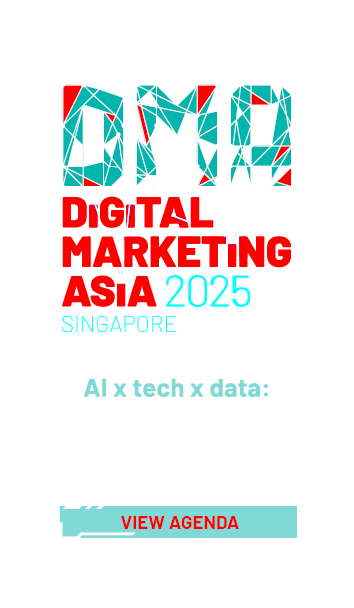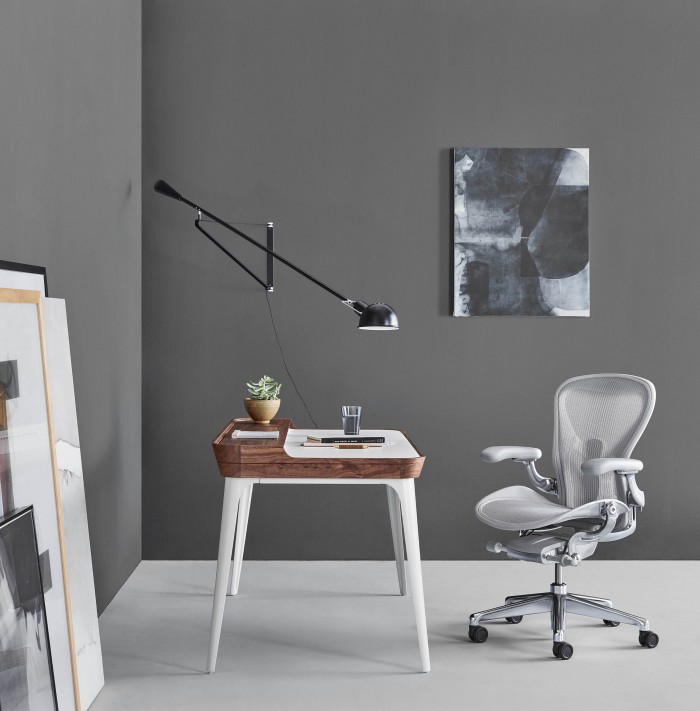



Sitting pretty: the market pioneer from India to China
share on
What do The Big Bang Theory’s Sheldon Cooper and James Bond’s M have in common? They both spin around on an Aeron chair. These may be fictional characters that we are talking about, but if you count all the screen time the Aeron has acquired since its launch in the 90s, it gives you an understanding of the iconic status that Herman Miller, Aeron’s manufacturer, has achieved.
The Aeron, which has acquired a place at New York’s influential Museum of Modern Art for its progressive design, was declared America’s best-selling chair in 2010.
And it is not the only product the brand speaks proudly about. Steve Jobs and Bill Gates have been seen sitting on the Eames Lounge Chair and Ottoman, while other furniture by Herman Miller can be found in the boardrooms of Amazon.com, Salesforce.com, Google, Tencent and offices in Metlife, Citibank and HSBC.
Its furniture is considered masterpieces across the globe. While the brand has been popular for many years, it only started gaining a reputation in Asia after finally entering the market two decades ago.
In a price-conscious era, where spending hundreds of US dollars for a single chair would be considered extravagant, expanding the client base has not been easy.
Around the time of the expansion into India, Kartik Shethia, the current vice-president for Asia Pacific at Herman Miller, joined the company as the national sales manager in India to head the sales operations.
“It was not easy,” he recalled.
“Unlike other mature markets in Asia such as Hong Kong, Japan and Singapore, the Indian market focused even more on the price.”
Furthermore, the market is very unique in terms of human density, and the scarce space that most offices have – indicating a need to foster a new marketing approach, which made the company’s expansion an uphill battle.
Yet, within two years, Shethia, as part of the team, kick-started increasing sales.
He was then promoted to head the commercial operations for Herman Miller in the SAARC region for nearly two years, and then appointed to head the strategic business group for the Greater China region. In 2015 he was appointed the sales director in the region.
Promoted to his current position nine months ago, he is based in Hong Kong to look over the Asia Pacific market, a region that is generating double-digit revenue growth per year; its revenue accounting for 8% to 9% of global sales. His target is to make the number hit 10 in three years.
One tactic that identified as crucial was being honest with clients.
Eight years ago, the team underwent an education stage in India which focused on explaining the brand value to its clients: the brand ensures a more flexible way to allocate furniture in the office; healthier workers on well-designed chairs; highly durable furniture in the office; and supporting environmentally friendly businesses.
It didn’t take too long for him to realise that being honest acted as a catalyst to the business.
From the capabilities to the limitations and even non-necessities, he emphasised both sides of the company’s products.
They are not really (listening) unless they are convinced that your intentions are sincere.
“There were customers who asked why they should buy our company’s products instead of our competitors, but I never speak bad about other brands. Our competitors are able to invest in new products and they have great ones, but we have to show them how and why we are the better choice.”
He named two of its global competitors later as Steelcase and Haworth.
When you are honest, clients appreciate that, and believe your words make sense. Then, your life becomes easier. In turn, expanding into other new markets becomes much easier.
There is no other region as diverse as Asia Pacific. From India to New Zealand to China, people are as varied as the languages they speak.
Shethia walked us through the different needs across the region.
In India, space is scarce, so the flexible workstations the brand provides serve as a good approach, he illustrated.
Meanwhile, the Philippines is more of an outsourcing kind of a place, so the teams need to help local companies squeeze as many people in their working stations as they can.
In Hong Kong and Singapore, the two markets are similar in their understanding and appreciation of design, so Herman Miller’s role in the designing field is an asset.
The Japan market is also a very design-conscious market and values precision, and products have to be extremely clean and firm in structure.
The marketing approach in Australia focuses on healthy working practices that the products bring, because customers there are more health conscious.
On the other hand, there is still much work to be done in China – a place that is both big in market volume with a serious counterfeit goods problem.
But Shethia said the brand was witnessing a huge transformation as customers start to appreciate originality and the products’ value.
“It is very important that you understand the customers’ needs and situations before you speak to them,” he explained.
“Nothing is easy. If it’s easy, it gets boring. Each market has its own challenges and it is an exciting thing to keep tuning into the market environment.”
Typically, the 112-year-old brand would focus on market claims before developing a product, but Shethia said it had started to spend more time with the designers and customers in the past three years.
Last month, Herman Miller remastered the Aeron chair globally to feature stronger and smarter materials, better adjustment capabilities, intuitive controls, enhanced aeration, and a health-positive, more comfortable sit.
Shethia told us to expect more localised products in the future.
“A flexible workplace is one of the biggest trends in the region, and it will become essential for companies to retain the millennial workforce,” he said, pointing it as a new inspiration for future product designs.
Furthermore, he is taking a deeper look at the online business. The brand’s online presence was built in Japan and China four and three years ago respectively, and Shethia opened the Hong Kong and Indian markets last year.
By jumping onto the bandwagon, he believes the brand is tapping uncharted territories.
And figures have proven him right. Sales growth rate in China has increased 30% per year, with online business accounting roughly for about 8% to 10% of the overall sales. The new channel added fuel to the B2C business, its commercial business sales ratio to that of the B2B is 15% to 85%.
“I’d like the ratio to change,” he said. “The most ideal ratio would be 3:1 (B2B to B2C).
“We had no consumer team before, but we have had to set up a complete consumer team to focus on that,” he said.
One of its tasks, he explained, was to utilise social media such as Facebook, Twitter, LinkedIn, Baidu and WeChat to their full potential because customers from the B2C sector are highly exposed to social media.
The other task for the team is to make the brand more accessible to clients and customers. To set an example himself, Shethia said he would never sit in a room at work, a practise that most leaders would normally do.
“The idea is, if I can be more easily accessible to you, then you should be more accessible on phone calls, emails et cetera to someone else as well,” he said.
But there is one more intention behind his practice, a lesson from the first challenge he encountered at Herman Miller eight years ago.
“There was a situation when I joined the company that some sales operations weren’t performing very well. When sales didn’t perform, what people usually do is to replace them with somebody else,” he said.
Encouraged by the company’s values, he decided to keep the employees, work with his colleagues closely and train them to understand and overcome problems better.
Many of them are now “big bosses” in the company, he said.
“I had learnt a great lesson. Good leaders are here to help, not to fire them or be angry with them. Not everything goes right all the time. But when they go wrong, I want them to let their boss know it from them before anybody else.”
Since then, he has been determined to break the barriers between boss and staff, and set a flat organisation for a conducive working environment.
Whether it’s the former president Barack Obama, or the tech giant Gates sitting on the Aeron; whether it’s the client or employees, and regardless of the country they are living in, the ultimate goal for Shethia is just to let everyone sit pretty on a piece of Herman Miller.
share on
Free newsletter
Get the daily lowdown on Asia's top marketing stories.
We break down the big and messy topics of the day so you're updated on the most important developments in Asia's marketing development – for free.
subscribe now open in new window

